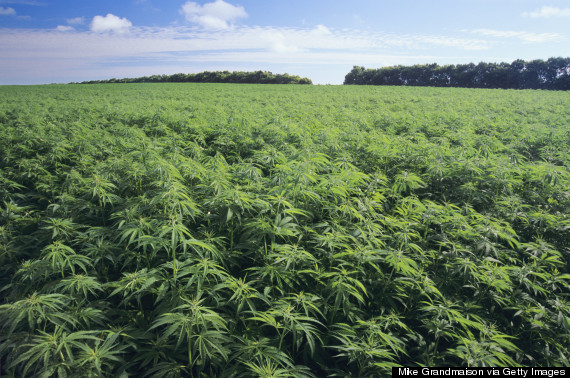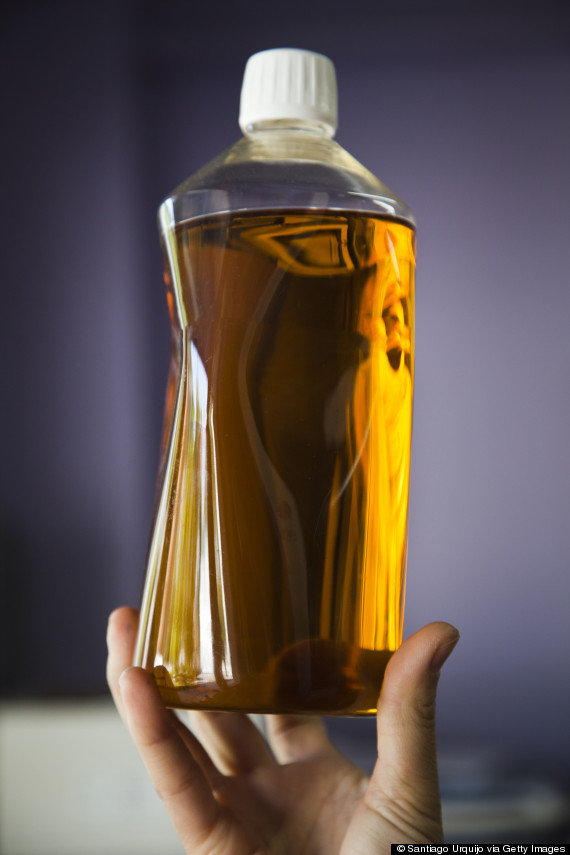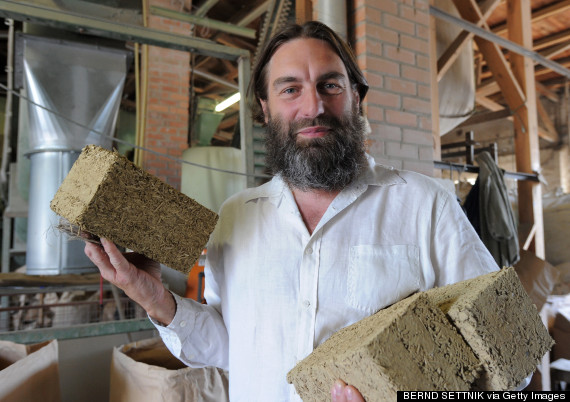Source: huffingtonpost.com
There's a new hemp trend sweeping the nation and it has nothing to do with thosebeaded friendship bracelets from the '90s.
Twenty-three states have now enacted pro-industrial hemp legislation (Hawaii Governor Neil Abercrombie signed the latest bill this past week), making the cousin crop to marijuana a national phenomenon. Since the beginning of the year, more than 70 bills related to hemp have been introduced in more than half of the country's states. Passage of the recent Farm Bill, which legalized the crop for research purposes, further cleared the way for industrial hemp production.
Hemp, which is the same species as marijuana (Cannabis sativa) but contains little to no THC, was grown widely in America before anti-drug sentiment helped make it unpopular in the 1950s. Today, however, the nation's turning tide on marijuana means its "sober cousin" is also making a comeback.
Hemp policy is "not just turning a corner," Rep. Earl Blumenauer (D-Ore.) told The Huffington Post earlier this year. "It's turning a corner and running downhill."
So what's with America's new obsession with hemp? Below, 9 reasons this wonder crop is sweeping the nation, almost all of which are rooted in the crop's sustainable and environmentally-friendly characteristics:
1. It's a farmer's best friend
Not only does hemp grow in a variety of climates and soil types, it also grows very tightly spaced (decreasing land use) and has a fast growing rate (which leads to high yields). Farmers in Canada are reportedly making $300-per-acre profits from growing hemp. Moreover, because the crop improves soil health (see below), farmers can grow food crops immediately after a hemp harvest without a fallow period.


Not only does hemp grow in a variety of climates and soil types, it also grows very tightly spaced (decreasing land use) and has a fast growing rate (which leads to high yields). Farmers in Canada are reportedly making $300-per-acre profits from growing hemp. Moreover, because the crop improves soil health (see below), farmers can grow food crops immediately after a hemp harvest without a fallow period.


2. It's an environmentalist's best friend
Ever wonder where the nickname "weed" comes from? The hemp plant grows like one, obviating the need for most pesticides (it is naturally resistant to most pests), herbicides, fungicides and thriving on less water than most crops. Because of its resiliency, it has also been flagged as a natural way to clean up soil pollution. Using a process called phyto-remediation, hemp was used at Chernobyl to harmlessly extract toxins and pollutants from the soil and groundwater. Hemp actually absorbs CO2 while it grows through natural photosynthesis, making it carbon-negative from the get-go.

Ever wonder where the nickname "weed" comes from? The hemp plant grows like one, obviating the need for most pesticides (it is naturally resistant to most pests), herbicides, fungicides and thriving on less water than most crops. Because of its resiliency, it has also been flagged as a natural way to clean up soil pollution. Using a process called phyto-remediation, hemp was used at Chernobyl to harmlessly extract toxins and pollutants from the soil and groundwater. Hemp actually absorbs CO2 while it grows through natural photosynthesis, making it carbon-negative from the get-go.

3. It can compete with cotton
Hemp has been used as a fabric since time immemorial. As a textile, hemp is durable, comes in a variety of natural colors based on how it is processed from the plant, and has "a wonderful drape, comparable to linen," according to Patagonia. Plus, it needs approximately half as much land and half as much water as cotton does to thrive.


Hemp has been used as a fabric since time immemorial. As a textile, hemp is durable, comes in a variety of natural colors based on how it is processed from the plant, and has "a wonderful drape, comparable to linen," according to Patagonia. Plus, it needs approximately half as much land and half as much water as cotton does to thrive.


4. It's a "superfood"
Hemp seeds are used in a variety of health foods, including hemp seed butters, hemp seed energy bars, hemp oil and even hemp seed milks. The seeds have a nutty flavor and are regarded as a superfood since they are high in omega-3 fatty acids and complete protein.


5. It could save the trees
Hemp pulp has been used to create paper for at least 2,000 years, including a draft of the Declaration of Independence, but it is currently significantly pricier to process than wood pulp. If processing costs come down, however, hemp pulp could conceivably replace wood pulp, creating a more durable, sustainable and recyclable paper. Moreover, hemp's low lignin content and naturally light color mean that fewer chemicals and less bleach would be needed to pulp and color hemp paper.

Hemp pulp has been used to create paper for at least 2,000 years, including a draft of the Declaration of Independence, but it is currently significantly pricier to process than wood pulp. If processing costs come down, however, hemp pulp could conceivably replace wood pulp, creating a more durable, sustainable and recyclable paper. Moreover, hemp's low lignin content and naturally light color mean that fewer chemicals and less bleach would be needed to pulp and color hemp paper.

6. It can be made into bio-fuel
A 2009 study from the University of Connecticut's Biofuel Consortium found that hemp seed oil made a "viable and even attractive" feedstock for producing biodiesel. Hemp biodiesel proved to be high efficiency (97 percent of the hemp oil was converted to biodiesel) and could even be used at lower temperatures than other biodiesels.

A 2009 study from the University of Connecticut's Biofuel Consortium found that hemp seed oil made a "viable and even attractive" feedstock for producing biodiesel. Hemp biodiesel proved to be high efficiency (97 percent of the hemp oil was converted to biodiesel) and could even be used at lower temperatures than other biodiesels.

7. We can make carbon-neutral buildings with it
Lovingly called "hempcrete," hemp fiber can be mixed with lime to create carbon-neutral building supplies, including insulation, pressboard, flooring and wall construction. Hempcrete is energy-efficient, non-toxic and resistant to mold, insects and fire. Moreover, it is easier to work with than concrete and just as strong.

Lovingly called "hempcrete," hemp fiber can be mixed with lime to create carbon-neutral building supplies, including insulation, pressboard, flooring and wall construction. Hempcrete is energy-efficient, non-toxic and resistant to mold, insects and fire. Moreover, it is easier to work with than concrete and just as strong.

8. It can replace plastic
Henry Ford famously built a car out of hemp & soy plastic in the early 1940s, and Lotus recently did the same. In 2008, the Lotus Eco Elise used hemp in its composite body panels and spoiler, and many car manufacturers have since switched to hemp composites for door panels, columns, seat backs, boot linings, floor consoles and instrument panels. Hemp composites are stronger, lighter and cheaper than fiber glass and carbon fiber -- plus, they're recyclable!

Henry Ford famously built a car out of hemp & soy plastic in the early 1940s, and Lotus recently did the same. In 2008, the Lotus Eco Elise used hemp in its composite body panels and spoiler, and many car manufacturers have since switched to hemp composites for door panels, columns, seat backs, boot linings, floor consoles and instrument panels. Hemp composites are stronger, lighter and cheaper than fiber glass and carbon fiber -- plus, they're recyclable!

9. It could make America a lot of money
Currently, America imports most of its hemp seed and hemp oil from China and Canada. In 2011, the U.S. imported $11.5 million worth of hemp products, up from $1.4 million in 2000. With the laws against industrial hemp changing, however, the U.S. has a chance to create domestic jobs and capitalize on the growing market. Some estimates value the U.S. industrial hemp market at $500 million per year; Canada's hemp industry is reportedly going to break a billion dollars this year in earnings.
Currently, America imports most of its hemp seed and hemp oil from China and Canada. In 2011, the U.S. imported $11.5 million worth of hemp products, up from $1.4 million in 2000. With the laws against industrial hemp changing, however, the U.S. has a chance to create domestic jobs and capitalize on the growing market. Some estimates value the U.S. industrial hemp market at $500 million per year; Canada's hemp industry is reportedly going to break a billion dollars this year in earnings.

No comments:
Post a Comment